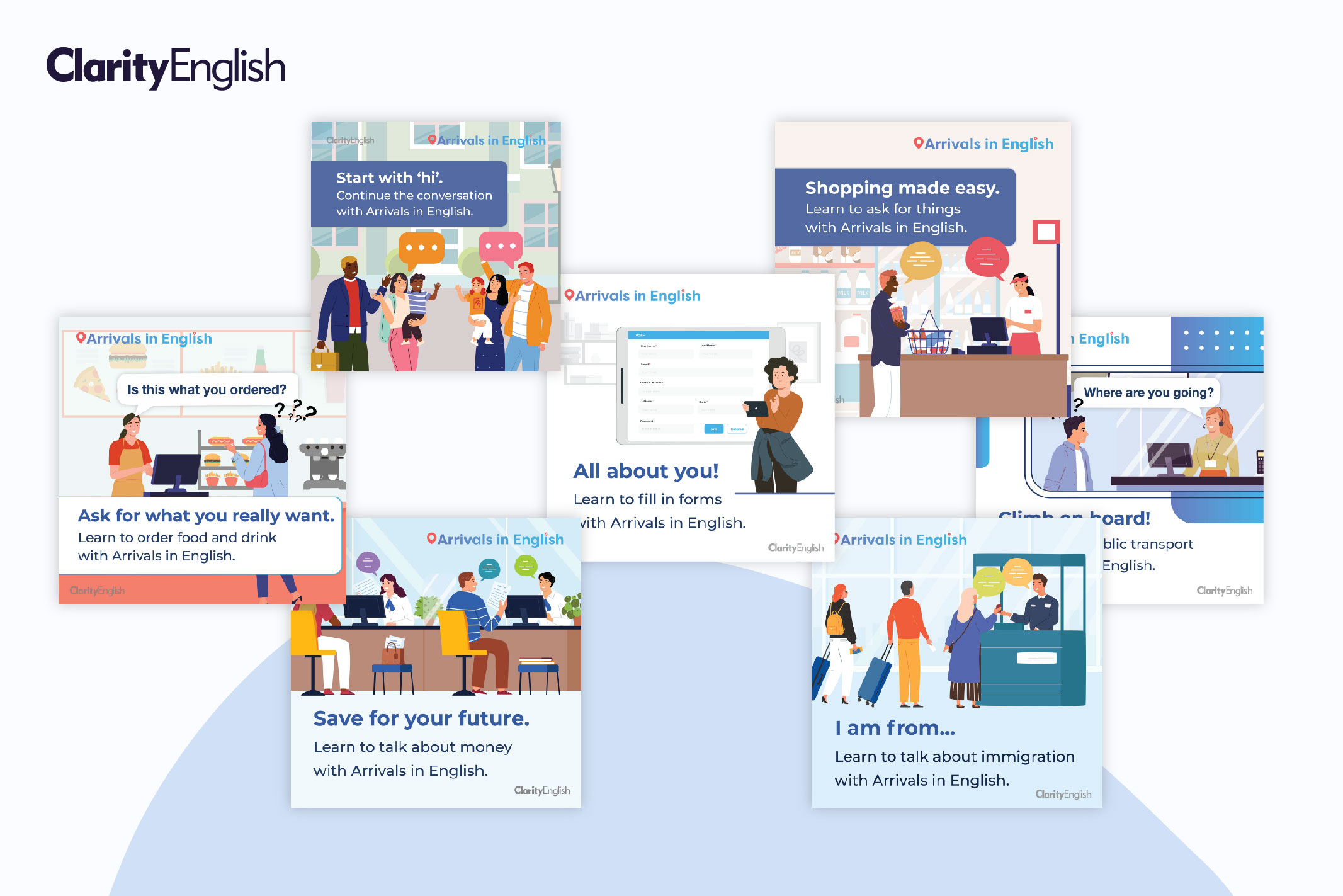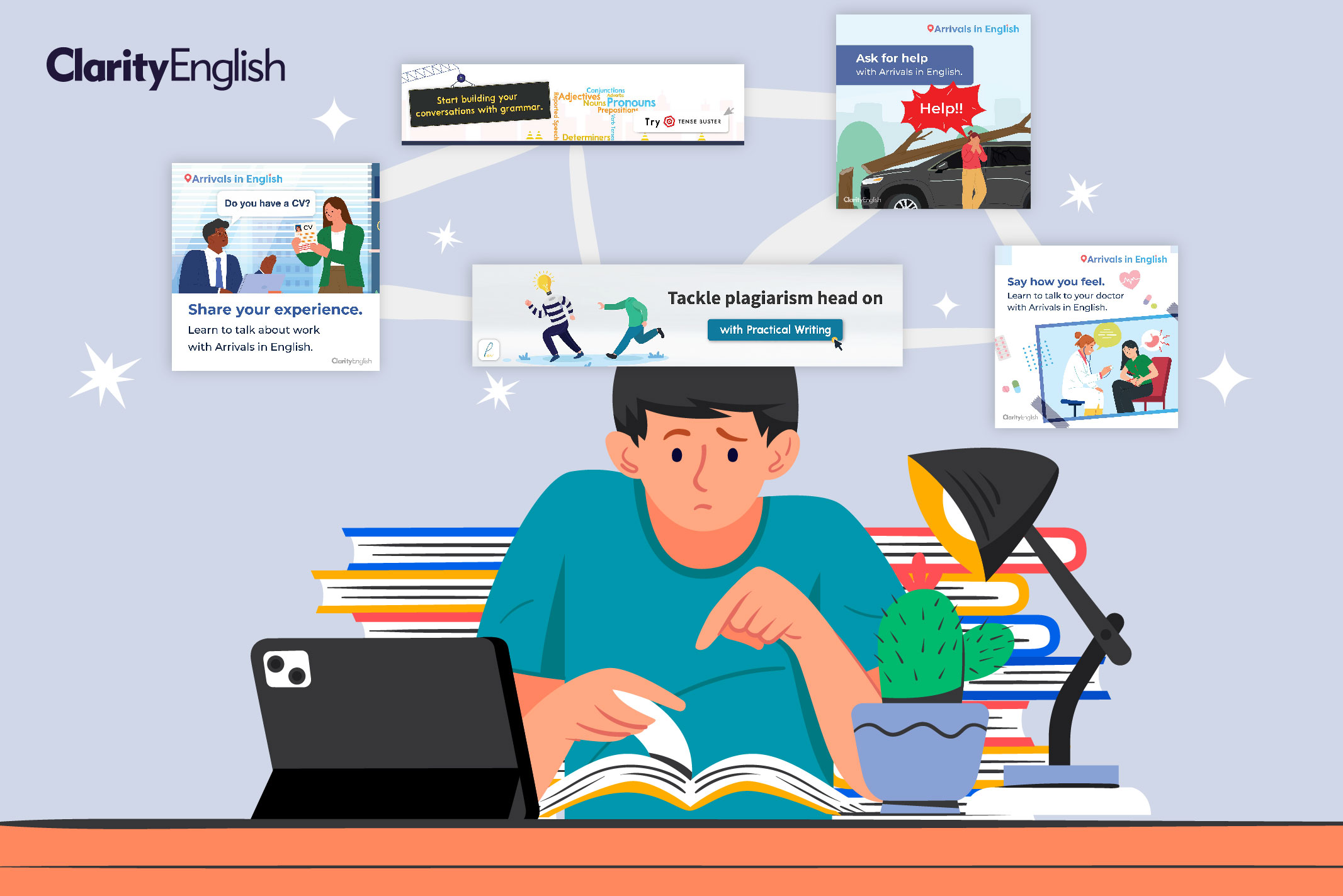“We have all of these wonderful resources but students have no idea they’re there! What can I do to promote them better?”
It’s always frustrating to discover that a student has been struggling with an area of their learning in silence – especially if there is a whole suite of resources available to help them. Getting the word out to learners about these materials can be a challenge, so, we asked teachers and librarians to share their top 5 tips on how to introduce and sustain student engagement with supplementary resources. By promoting these tools strategically and effectively, you can help your students make the most of what’s available.
1. Centre stage: Make programs stand out visually
Website banners are a great eye-catching tool to increase student awareness and encourage exploration. Use these banners in prominent locations, such as the homepage, library portals, or key resource pages, to draw attention. Clarity provides ready-to-use website banners on our website for all our programs and these can be placed on school or library websites.

2. Group programs by skill
Avoid listing resources alphabetically. Instead, try organising the resources by skill areas – such as grammar, reading, and listening. This makes it easier for students to find relevant programs based on their current learning objectives and reduces the need to scroll through lengthy lists.
3. Introduction and induction
Introducing programs in an induction session can be a highly effective way to engage students. You can highlight the available and relevant programs, providing a quick demo to show students the platform, key features, and user interface. This helps them understand how each tool aligns with their learning goals and what to expect as they begin using the programs independently. This was a highly successful strategy with Shung Tak Catholic English College in Hong Kong, who introduced Study Skills Success to their students before the summer holidays in an induction session that focused on mobile program use.
4. Go to them: Utilising social media
If you can’t beat them, join them! Social media is a great way to share information with your students. Research suggests students spend an average of 2.5hrs per day on social media (though I would guess the number is much higher). So being where their attention is being pulled will not only make your information messaging more visible and present on their screens, but it’s also a fun, visual and engaging way to share the content and benefits of the tools you’re providing. Take a look at Clarity’s latest social media graphics for Arrivals in English.

5. It starts from the top: Teacher familiarisation
Make sure you and your colleagues understand how the resources you subscribe to can help your students – for example, can they be used on mobile; can they be used for revision, consolidation, or remedial work; are they better for in-class usage or self-study. This will ensure that teachers promote these resources in class.
If you’re looking for teacher training for your Clarity programs, in some cases, you can ask your local Clarity account manager to host webinars or workshops to help teachers become familiar with the available resources. During these sessions, the account manager will demonstrate how to use Clarity programs and explain how each program can support specific learning goals. These interactive sessions offer students a hands-on introduction and the opportunity to ask questions.
By using these strategies, you can make ClarityEnglish programs an accessible and integral part of your students’ learning journey, supporting them as they develop the skills they need to succeed.

